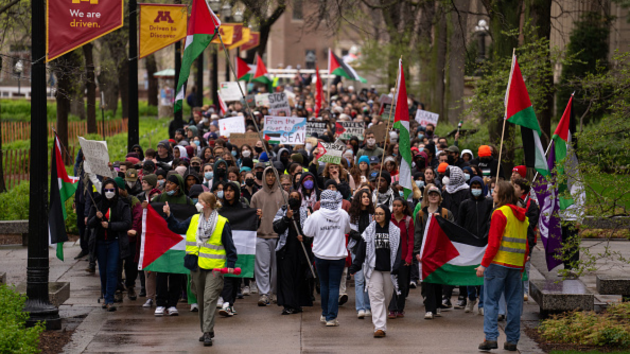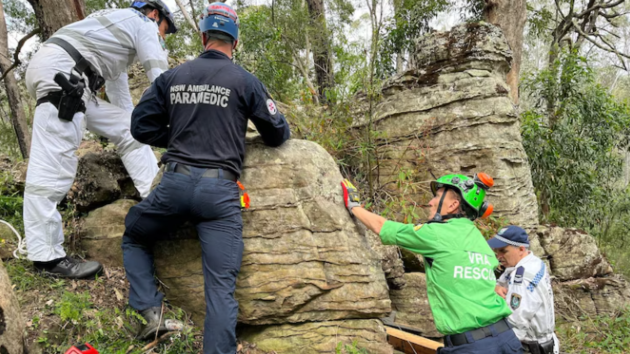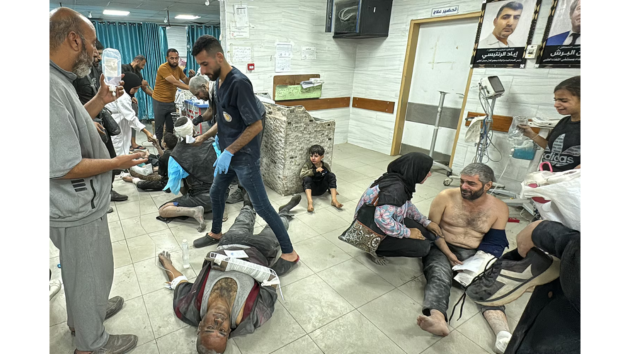‘Fortress Australia’ cautiously moving away from COVID Zero, but there’s still a long path to freedom
Written by Luck Wilson on September 16, 2021

(SYDNEY) — Australia’s approach to the pandemic — strict border policies, snap lockdowns and aggressive contact tracing — saw the country, along with neighboring New Zealand, praised throughout 2020 for taking a no-tolerance approach to public health. It paid off. While other countries faced overwhelmed hospital systems and devastating death tolls, Australia enjoyed large public gatherings, and life went on as normal for most people within its sealed-off borders.
But confronted with rising cases of the delta variant, the Australian government has announced a dramatic shift, planning now to “live with the virus” rather than stamp it out entirely.
In short, “Fortress Australia” has been breached.
During a televised briefing last month, Prime Minister Scott Morrison said that lockdowns, which in some parts of the country have endured for more than six months, were “not a sustainable way to live.”
“This Groundhog Day has to end, and it will end when we start getting to 70% and 80%,” he said, referring to vaccination rates.
Much of the country remains largely COVID-free. But the states of New South Wales and Victoria, home to metropolises Sydney and Melbourne, have posted record numbers of daily infections in recent weeks. Between Sept. 1, 2020, and July 1 of this year, the country recorded fewer than 5,000 coronavirus cases. But since then, total cumulative cases have more than doubled in under three months, from 30,684 to more than 66,000 as the delta variant took hold, according to Our World in Data.
“The reality is that delta is too infectious to be able to eliminate it with the amount of restriction that can be sustained by a population that is already really, really tired of restrictions after having gone through more than 200 days of restriction previously,” Professor Ivo Mueller, an epidemiologist at the Walter and Eliza Hall Institute of Medical Research, told ABC News. “So that, in a sense, forced the hand of the government to accept that we have to go from ‘COVID Zero’ to ‘living with COVID.'”
But internal restrictions in New South Wales and Victoria, as well as heavy restrictions the government has placed on intrastate travel, may endure for some time. The 80% target set by Morrison for vaccinations is unlikely to be achieved by mid-October, according to current trends.
As it stands, fewer than 35% of Australians are fully vaccinated, putting the nation among the lowest of OECD countries.
Australia is now administering doses at higher rates than peaks seen in the United States, but supply remains an issue.
“Vaccine hesitancy is rare,” Professor Mary-Louise McLaws, an epidemiologist at the University of New South Wales, told ABC News. “Anti-vaxxers exist here but are rare in Australia. The real problem has been lack of supply. Our authorities have been too slow to acquire sufficient vaccine doses for the young, who were supposed to get Pfizer and then confusion occurred when Pfizer deliveries were stalled.”
This led to intense criticism of the government that it failed to chase vaccines with urgency, as Morrison repeatedly told the public, “It’s not a race.”
Now the Australian government has struck deals with other countries, including Britain and Singapore, to secure Pfizer doses earlier and help end the lockdown sooner.
While the government’s exit strategy marks a change in approach, some states are showing more eagerness to loosen restrictions.
Aside from domestic border closures between states, citizens in the majority of Australian states are living virtually COVID-free lives, and the idea of opening up their gates may prove unpopular.
New South Wales Premier Gladys Berejiklian previously has warned that other states can’t continue to live “in their bubbles” forever.
Berejiklian announced on Thursday that New South Wales, home to Australia’s biggest city, Sydney, will ease lockdown restrictions from mid-October, when authorities expect 70% of adults in her state to be vaccinated. At that point, she said, Sydney’s restaurants, cafes and pubs can reopen.
That’s despite infections there lingering at record levels. On Saturday, New South Wales recorded 1,599 cases of COVID-19 — the highest daily tally since the pandemic began.
“I want to stress that whilst today the New South Wales government is outlining our plan, our roadmap for the way forward in New South Wales, that we’re definitely not out of the woods,” Berejiklian said during a daily briefing. “We know that case numbers are likely to peak in the next week or so, and we also know that our hospital system will be under the greatest stress in October.”
In Melbourne, residents have tired of over 220 cumulative days of lockdown. Yasmin Vachha, a primary school teacher in the Victorian capital, has been teaching from home for 30 weeks altogether, as the state has gone in and out of lockdowns. She said the experience shows the country is “not a united front” and it is increasingly “hard to see the light.”
“The kids are flat, motivation is low and you can see it all taking its toll,” she told ABC News. “We all have our own lockdown despair happening and it is getting harder by the day. I hate that this is now normal and that we have to be OK with it. How are we still in this position?”
The criticism is not restricted to Australians currently in the country. In March 2020, the government shuttered its international borders, barring most foreigners and putting caps on total arrivals to help keep the virus at bay.
As a result, tens of thousands of Australians remain trapped overseas — around 34,000 registered with the Department of Foreign Affairs and Trade as being stranded abroad. The actual number who want to return home is likely far higher.
Some are deterred at the prospect of returning home by restrictive and expensive quarantine measures, while others can’t secure a plane ticket home at all.
The policies have separated thousands of families, and led to heartbreaking stories of Australians unable to get home to see terminally ill relatives. Many have been forced to miss weddings, births and funerals.
To make matters worse, Australia in July slashed the number of international arrivals by half — to about 3,000 passengers a week.
But in another sign that the Australian government is shifting gears, for the first time since the pandemic started, Morrison on Wednesday acknowledged the frustration that Australian expatriates were going through, and opened up the prospect of families being able to reunite at home for Christmas: “You have saved lives by enduring and going through those difficulties, so thank you — I do appreciate it, and your fellow Australians do also.”
Morrison said his government was hard at work to enforce a home quarantine system, to reconnect Australia with the world.
There are now also indications that the government will drop a travel ban on Australians leaving the country. The Australian Lawyers for Human Rights, an association of legal professionals, has been pressuring the government to stop its “bullying” of Australians living overseas.
The internal border restrictions also have led to heartbreak and frustration. According to The Guardian, a New South Wales resident this month has been unable to cross the border for vital cancer treatment in neighboring Queensland due to a compulsory hotel quarantine, and on Father’s Day, families separated by border closures hugged across a state boundary which fell through the suburb of Coolangatta in Sydney.
MORE: Iran facing its deadliest coronavirus surge after banning import on US vaccines
A new app is being tested in South Australia that deploys facial recognition technology and cell phone alerts to replace the hotel system. It was described in the Atlantic as “Orwellian” in an article that said people would be “forced to download it,” but an Australian government source said that terminology was misleading.
“The home quarantine app is for a selected cohort of returning South Australians who have applied to be a part of the trial,” a government spokesperson said. “If successful, it will help safely ease the burden of travel restrictions associated with the pandemic.”
The issue of civil liberties under threat has been overblown, according to McLaws.
“While restrictions are tough and we are tired of them, Australians are less obsessed with individual rights during this time,” she said. “Australians like their freedom, but they aren’t willing to have it at the price of many deaths.”
While the new timeline for opening up society will come as welcome news for those living under some of the world’s longest lockdowns, an instantaneous reopening or “freedom day” is not on the cards, according to Mueller. The government has observed the high rates of transmission in highly vaccinated countries like the U.S. and U.K., and will continue to adopt a tough approach, he said.
“Eventually, people will come to the point that they want those freedoms back again,” he said. “And I think all political leaders and all state leaders do recognize that, and I think also the population in Australia does recognize that they eventually will have to open up and that will mean that the virus will circulate in the population.”
“Australia,” he added, “cannot remain forever an island.”
Copyright © 2021, ABC Audio. All rights reserved.






